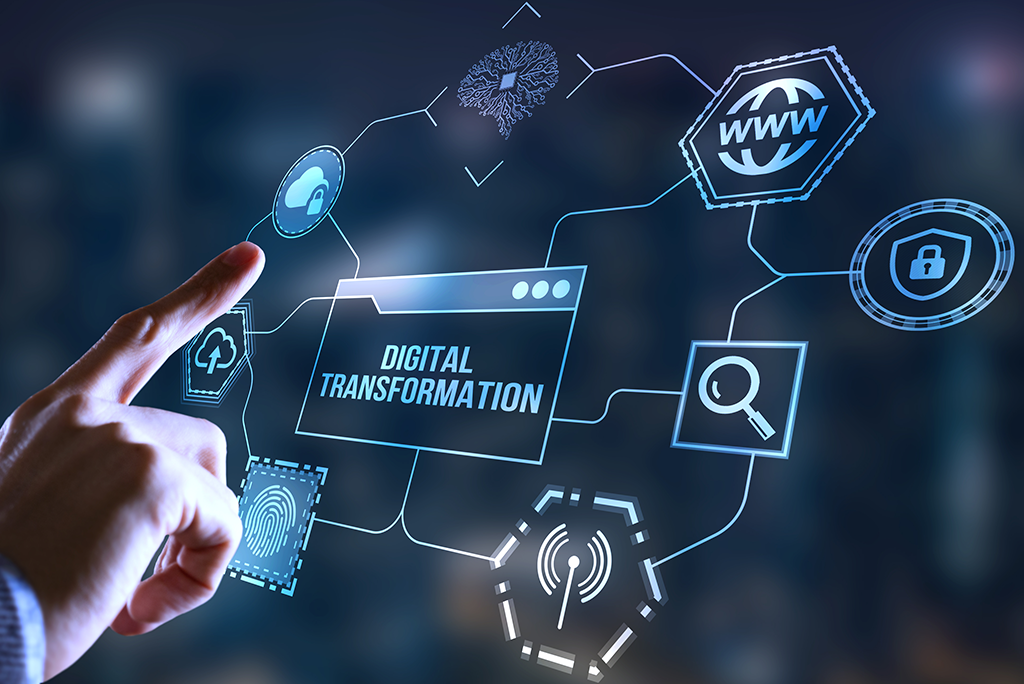WHAT DO WE REALLY MEAN BY “DIGITAL TRANSFORMATION”?
Digital transformation refers to the transition from an essentially material economy , based on physical points of sale (office, paper files, cash payments, etc.) to a dematerialized economy based on data exchanges (e -shops, cloud, virtual currencies, etc.).
These digital uses impact the company in all its dimensions: functions, processes, services (sales, marketing, finance, HR, etc.).
Physical barriers have been erased, access to information is facilitated, the volumes of available data have multiplied, consumption and communication methods have been transformed.
Capgemini Consulting has classified companies into four categories according to their degree of progress in terms of digitalisation:
- the “Beginners” (or the skeptics),
- “Conservatives” (moderate users),
- the “Fashionistas” (those who use it as a fashion),
- the “Digital Masters” (those who have definitively integrated digital as a tool for strategic transformation).
The figures speak for themselves: Digital Masters are on average 26% more profitable than their peers with a 9% higher turnover.

This transformation seems all the more crucial for SMEs and ethical since the observation is made on small-sized companies, absent from the digital universe, will disappear within 10 years in favor of more agile and reactive competitors who will have known change with the help, for example, of interim management.
WHICH LEADER SHOULD LEAD THIS TRANSFORMATION?
The CEO, the DAF, the DSI …? Faced with the savings made, companies are investing, in particular in the implementation of predictive analysis and artificial intelligence to interpret data during strategic decisions. This is why the Finance Department now plays a key role in the strategy by being responsible for forecasting the results of digital investments.
EXAMPLES OF DIGITAL TRANSFORMATIONS
They are known, and are taking the digital turn to remain so:
- General Society:
The means implemented to ensure that digital is an effective turning point for both employees and customers are major. See it here: “Digital for All” at Societe Generale – YouTube
- McDonalds:
Everything is standardized digitally, for each restaurant, according to its location. The user experience is also digital, with a profile accessible on any medium, even in restaurants.
- Darty:
The sales assistants in many stores are equipped with digital media with permanent access to the Darty system, in order to best meet the needs and questions of customers.

Many customers are already informed and check each seller’s information in real time on their smartphone. Sellers also have the option of validating a payment without the need for checkout.
THE ROLE OF TRANSITION MANAGERS IN DIGITAL TRANSFORMATION
The digital transition responds to major strategic challenges . Through it, the entire chain of production or services is modified. As a tool for accelerating innovation, it makes it possible to reinvent customer relations, it promotes the autonomy of employees, it decompartmentalizes services. Thanks to it, the operational performance and profitability of the company increase, customers are supported, benefit from personalized services and are more inclined to pay attention to the offers that are proposed to them.
For a successful digital transformation cannot be improvised, those responsible for it must have a certain experience.
Interim Managers go from mission to mission, and some have, during their careers, led many digital transformations. A successful transformation is a rapid transformation, calling on the right employees, the experience and talents of multiple profiles, techniques adapted to the needs of the company, with a uniquely positive impact for the client.












Replies to This Discussion